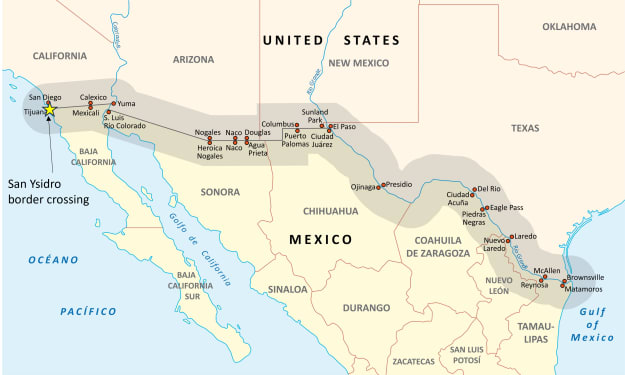Events That Lead To World War I
Events That Lead To World War I

All sections of public life went on to form an army armed to defeat the Germans. At the time of the 1918 harvest, Pershing acknowledged that the AEF was ready to face its all-powerful enemy. Germany is sending troops to Luxembourg and is asking Belgium to allow German troops to enter their non-allied base. Show Sources
Battle of Tannenberg (26 August 1914) German forces opposed the second Russian army on the East Front under a new order from Paul von Hindenburg and Erich Ludendorff. With the help of air surveillance and the acquisition of recorded Russian radio messages, the Germans reorganized their troops to monitor Russia's progress. Show Sources
To the amazement of the Germans, the allies who assisted with 2,000 rifles, 1,900 planes and 500 tanks attacked, caused German misfortunes and deadly strikes to settle. Five days later the Russian-led war ended with a German victory over 125,000 Russians. The Battle of the Marne (5-12 September 1914) in the Western Front near Paris saved French and British troops and disrupted Schlieffen's plan to oppose German dissidents east of Paris. Show Sources
The French armed forces are attacking Alsace-Lorraine according to its imperial plan known as Plan XVII. The combined forces of Austro-Hungarians, Germans and Bulgarians invaded Serbia. British and French troops, including Australians and New Zealanders from Anzac, settled in the Ottoman Empire on the Gallipoli Peninsula. Show Sources
After endless fighting, the Serbian military force was forced to retreat to Montenegro and later to Albania. It was the main European nation to cross over to the Germans. Show Sources
His death by Gavrilo Princip, a Serbian activist linked to the mysterious Black Hand army, drove all of Europe's most important troops out of the war. At a time when these countries are heading in the same direction, the death of a Serbian general and their military statement created a kind of diminishing influence. Show Sources
The Ottoman Empire, Turkey and Germany signed an unmistakable union agreement. One hundred years before this Friday, international lawmakers in France marked the Versailles region to accept a deal with Europe at the expense of Germany. Show Sources
On Friday 125 years ago, Serbian activists assassinated Archduke Franz Ferdinand of Austria and embarked on a series of world events that marked the beginning of World War I. On June 28, 1914, Austro-Hungarian successor Archduke Franz Ferdinand and others important figures were killed by Serbian-backed terrorists who supported them. Both Austrian Archduke and then-wife Sophie Chotek and Bosnian Serbian activist Gavrilo Princip were killed. Show Sources
The German invasion of Zeppelin in Great Britain begins and takes the British people regularly into battle. A major European war since the Battle of Waterloo in 1815, the Battle of Mon, took place in Mon, Belgium, when a force of 75,000 British men attacked an expected 150,000 Germans trying to capture the Can-Conde Canal. Show Sources
In the continuation of four battles in the long line of World War I, 75,000 of Britain's tested forces were defeated and forced to withdraw from the long distances of World War I, giving the important victory expected of 150,000 Germans. Four years later, from 1914 to 1918, war broke out throughout Europe in the western and eastern parts of the country, exacerbating the growing problems and the death of Archduke Franz Ferdinand of Austria. The fight against parcels and the use of tanks too early, submarines and aircraft have provoked irrational speculation that an estimated 40 million military and military casualties are expected to exceed 20 million. Wars fought in brutal environments saw the massacre of the people and won any mysterious victory, with the conflict going on for quite some time. Show Sources
The Allies won World War I following four years of fighting and the death of 8.5 million soldiers wounded by war and disease. In 1917, conflicts clashed with Central Germany, Austria-Hungary and Turkey, France, Britain, Russia, Italy, Japan, and the United States. After Serbia waged two Balkan wars (1912-13 and 1913), Serbian activists accepted the liberation of the southern Slavs of Austro-Hungary. Show Sources
World War I was a turning point in the history of the twentieth century. It led to the overthrow of the four great powers of Germany, Russia, Austria-Hungary and Turkey in the aftermath of the Bolshevik Revolution in Russia and the establishment of the Second World War. The result of the conflict is making the provinces of dissatisfaction that created the Weimar Republic and Germany extremely dangerous. Show Sources
This page provides a summary of major times, battles and battles from the beginning of the war to the end of the war. To find out more, visit our in-depth World War I course, which offers a good look at World War I with photos, unique video film and audio. Show Sources
In the nineteenth century, important European armies made a concerted effort to keep pace with European power, creating a complex network of political and military organizations throughout the country, which led to the First World War. As shown by the ancients, these conflicts led to a civil war that turned out to be a world war. The Triple Alliance and the Triple Entente were recaptured several times, sparked a war and eventually had two rival factions, Italy became an Entente partner at the beginning of the war and elsewhere.





Comments
There are no comments for this story
Be the first to respond and start the conversation.